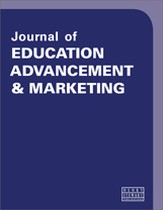Technical debt: What it is, how it limits you and what you can do to manage it
Abstract
Within educational advancement services, technical debt (and data debt) can have positive or adverse impacts on the strategic initiatives of your organisation as well as your team’s ability to innovate or feel empowered. With the ever-growing need for data products, technical debt can be leveraged positively to provide timely insights into prospect engagement or donor segmentation. However, like its financial counterpart, it can adversely affect staff morale, impair a team’s velocity and impact overall productivity, if it is not managed. This paper identifies what technical debt is; differentiates the types of technical debt and their corresponding effects on your strategies and leadership; and proposes techniques to empower your staff in assessing, mitigating, and planning your technical debt.
The full article is available to subscribers to the journal.
Author's Biography
Christopher Amherst is an Assistant Director of Advancement Information Systems at the Rochester Institute of Technology (RIT). Having a passion for data and technology, his portfolio within University Advancement focuses on data operations, data governance and data management. With over 15 years of experience in data, advancement services and higher education, Christopher is a member of the Council for Advancement and Support of Education (CASE), the Association of Advancement Services Professionals (AASP) and the Data Management Association (DAMA). Currently, he volunteers on AASP’s Best Practices in Advancement Technology Committee and has presented at the CASE All Districts conference and AASP’s annual Summit conference.
